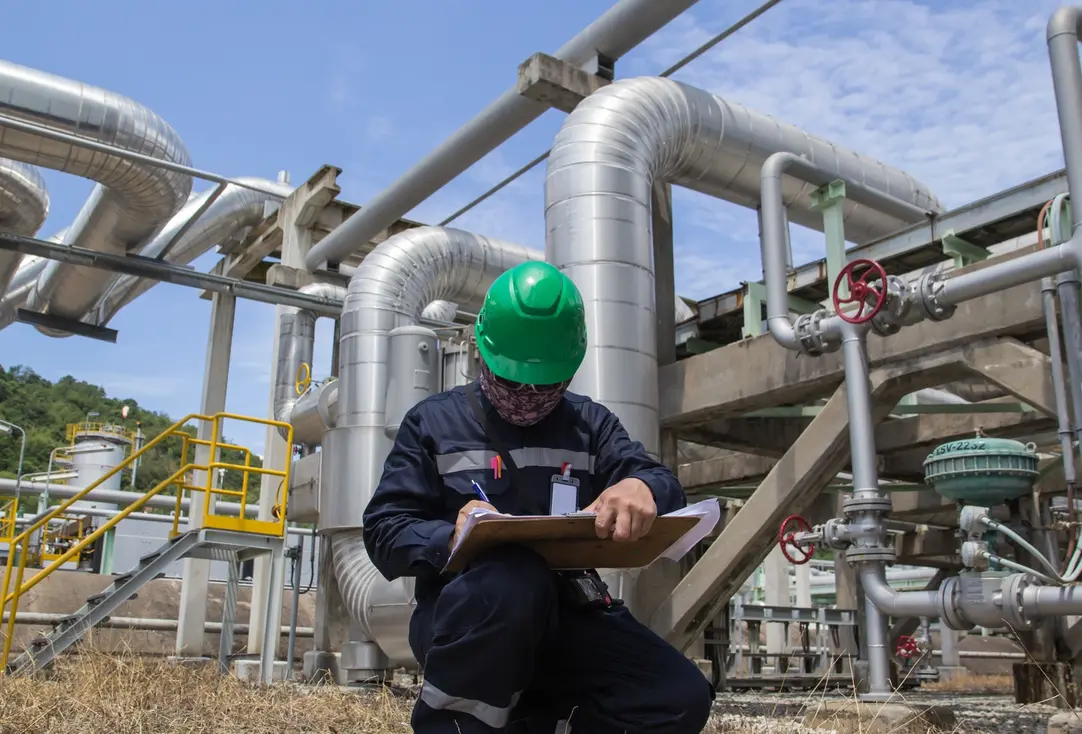Pipelines are the lifeline of the global energy supply chain, transporting dangerous fluids like natural gas, crude oil, and chemicals over long distances. Yet pipeline failure has catastrophic effects. It causes loss of life, environmental damage, and liability costs. A Pipeline Safety Management System (PSMS) is a structured method of pipeline operation risk identification, minimization, and management.
This guide is aimed at pipeline operators, safety practitioners, and regulatory stakeholders who are interested in learning about, developing, or advancing their PSMS. This guide follows API Recommended Practice 1173, the pipeline industry standard for pipeline safety management.
What Is a Pipeline Safety Management System?
A Pipeline Safety Management System (PSMS) is a documented, written method of ensuring high pipeline safety performance. It is comprised of policies, procedures, and processes that aid in the safe design, construction, operation, and maintenance of pipelines.
Core Objective:
To systematically minimize the frequency and effect of pipeline accidents by integrating safety into all company activities.
Core Elements of a Pipeline Safety Management System
Based on API RP 1173, a robust PSMS consists of ten key elements:
- Leadership and Management Commitment
- Senior management must visibly endorse safety policies.
- Allocate adequate resources for safety programs.
- Hold all levels of the organization accountable for safety performance.
- Stakeholder Engagement
- Communicate proactively with internal and external stakeholders.
- Involve landowners, contractors, regulatory bodies, and communities.
- Risk Management
- Identify, assess, and prioritize pipeline risks.
- Apply controls such as leak detection, corrosion monitoring, and pressure management.
- Operational Controls
- Develop Standard Operating Procedures (SOPs) for routine and emergency tasks.
- Ensure documentation is updated and accessible.
- Incident Investigation
- Establish root cause analysis (RCA) protocols.
- Use findings to correct deficiencies and prevent recurrence.
- Safety Assurance
- Conduct internal and third-party audits.
- Monitor leading and lagging safety indicators.
- Management Review and Continuous Improvement
- Use data and feedback to improve safety processes.
- Hold regular reviews of the system’s effectiveness.
- Emergency Preparedness and Response
- Maintain and test emergency response plans (ERPs).
- Coordinate with local emergency services and regulators.
- Competence, Awareness, and Training
- Train employees and contractors on safety-critical tasks.
- Evaluate competency regularly and provide refresher training.
- Documentation and Record Keeping
- Maintain up-to-date records of inspections, repairs, audits, and training.
- Use digital systems for traceability and compliance.
Benefits of Implementing PSMS
- Reduced Incident Rates
- Regulatory Compliance (e.g., PHMSA, OSHA, EPA)
- Enhanced Public Trust and Social License to Operate
- Operational Efficiency and Cost Savings
- Crisis Readiness and Business Continuity
Key Regulatory Standards and Frameworks
- API Recommended Practice 1173 – Gold standard for PSMS.
- PHMSA Pipeline Safety Regulations (49 CFR Parts 190–199) – U.S. federal requirements.
- ISO 45001:2018 – Occupational Health and Safety Management.
- OSHA Process Safety Management (PSM) – For hazardous chemical pipelines.
Read Also: What is an Underwater Welder’s Life Expectancy
Steps to Implement a Pipeline Safety Management System
Step 1: Gap Analysis
- Assess your current safety programs against API RP 1173 requirements.
Step 2: Leadership Buy-In
- Secure commitment from executive leadership to support PSMS implementation.
Step 3: Develop Policies and Procedures
- Document safety management practices and standardize them across the organization.
Step 4: Risk Assessment
- Conduct hazard identification and risk evaluation across pipeline assets.
Step 5: Staff Training and Awareness
- Deliver role-specific training for pipeline operators, inspectors, and emergency personnel.
Step 6: Monitor and Measure Performance
- Use Key Performance Indicators (KPIs) to evaluate system effectiveness.
Step 7: Review and Improve
- Schedule regular internal reviews and update the system based on findings and lessons learned.
Common PSMS Implementation Challenges
- Cultural Resistance – Overcoming the “we’ve always done it this way” mindset.
- Resource Allocation – Balancing safety investments with operational budgets.
- Data Integration – Centralizing inspection, maintenance, and incident data.
- Contractor Management – Ensuring third-party compliance with PSMS requirements.
Case Study: PSMS in Action
A U.S.-based midstream oil company adopted API RP 1173 and implemented a PSMS that resulted in:
- 40% reduction in safety incidents over 2 years.
- Enhanced regulatory audit outcomes.
- Improved stakeholder relationships with local communities and first responders.
This success was attributed to leadership involvement, data-driven decision-making, and consistent employee engagement.
Read Also: Safety Watcher: Duties, Job Opportunities, and Salary
Conclusion
Pipeline safety is not an option—it’s a responsibility. A well-designed and properly implemented Pipeline Safety Management System (PSMS) forms the foundation of a proactive safety culture. With growing regulatory scrutiny and public awareness, companies that prioritize safety through PSMS gain a competitive advantage and ensure long-term sustainability.
Frequently Asked Questions (FAQs)
What is API RP 1173?
API RP 1173 is the American Petroleum Institute’s Recommended Practice for Pipeline Safety Management Systems, providing guidelines to help pipeline operators improve safety performance.
Is PSMS mandatory in the U.S.?
While not legally mandated, PHMSA strongly encourages PSMS implementation. Some states and operators require it for compliance and best practices.
Who is responsible for PSMS?
Top leadership is ultimately accountable, but successful PSMS requires involvement from all organizational levels—management, employees, and contractors.
Can small pipeline operators implement PSMS?
Yes. PSMS can be scaled to suit the size and complexity of the operation. Even small operators benefit from a systematic approach to safety.
How often should PSMS be reviewed?
At least annually or following major incidents, audits, or significant operational changes.
